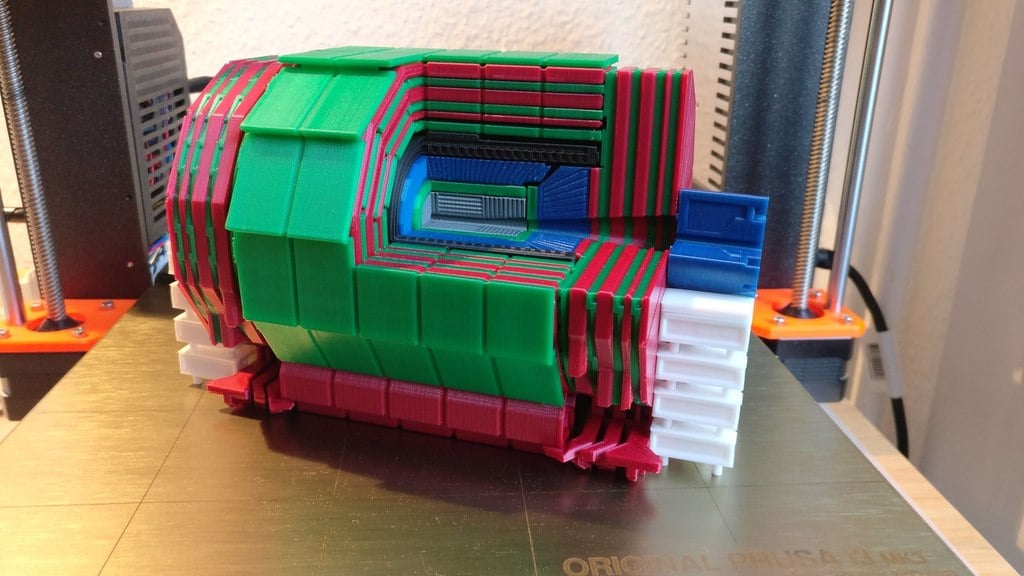
CERN's CMS Detector
thingiverse
The Compact Muon Solenoid detector is one of the four main experiments at the Large Hadron Collider, the world's largest and most powerful particle accelerator. Located 100 meters underground near Cessy, France, this massive device weighs 14,000 tonnes and stands 15 meters high and 21 meters long. A 120:1 scale model showcases CMS' key components, based on original Technical Design Reports and the SketchUpCMS project. This model was initially created by James Wetzel, W.G. Wetzel, and Nick Arevalo with funding from Don Lincoln. The Compact Muon Solenoid's primary objective is to study a wide range of physics phenomena, including the Standard Model, extra dimensions, and particles that could make up dark matter. CMS consists of several concentric layers of components, resembling a cylindrical onion. These components help create detailed images of particle collisions by determining the properties of produced particles. Collisions occur at the center of the detector, within the LHC's beam pipes. Two high-energy beams travel in opposite directions before colliding, producing an enormous number of particles. The CMS detector is built around a massive solenoid magnet that generates a 4 tesla magnetic field, confining it with a steel yoke. CMS acts as a high-speed camera, capturing 3D images of particle collisions from all angles at rates exceeding 40 million times per second. It identifies and measures the momenta and energies of stable particles produced in each collision, recreating an image for further analysis. Here's a breakdown of each component represented in the model, viewed from the inside out: 1. The Silicon Tracker is made up of around 75 million individual electronic sensors arranged in concentric layers. When a charged particle passes through this layer, it interacts electromagnetically with the silicon and produces hits that can be joined together to identify the track of the traversing particle. 2. The Electromagnetic Calorimeter measures the energy of electrons and photons by stopping them completely. 3. The Hadron Calorimeter measures the energy of "hadrons," particles composed of quarks and gluons (for example, protons, neutrons, pions, and kaons). 4. The solenoid magnet is formed by a cylindrical coil of superconducting fibers that generates a magnetic field of around 4 tesla when electricity flows through it. 5. The steel yoke confines the high magnetic field to the volume of the detector. 6. The muon chambers are crucial components of CMS, with two types: Drift Tubes (DTs) and Resistive Plate Chambers (RPCs). 7. The endcaps "close" the ends of the barrel, made up of alternating layers of steel yoke and muon chambers, composed of Cathode Strip Chambers (CSCs) and Resistive Plate Chambers (RPCs). 8. The Hadronic Forward calorimeters pick up particles coming out of the collision region at shallow angles relative to the beam line. 9. A compressed-air powered piston system lifts the endcaps when moving them into position, with each pad able to lift ~350 tonnes! 10. Support structures hold the entire device in place.
With this file you will be able to print CERN's CMS Detector with your 3D printer. Click on the button and save the file on your computer to work, edit or customize your design. You can also find more 3D designs for printers on CERN's CMS Detector.
